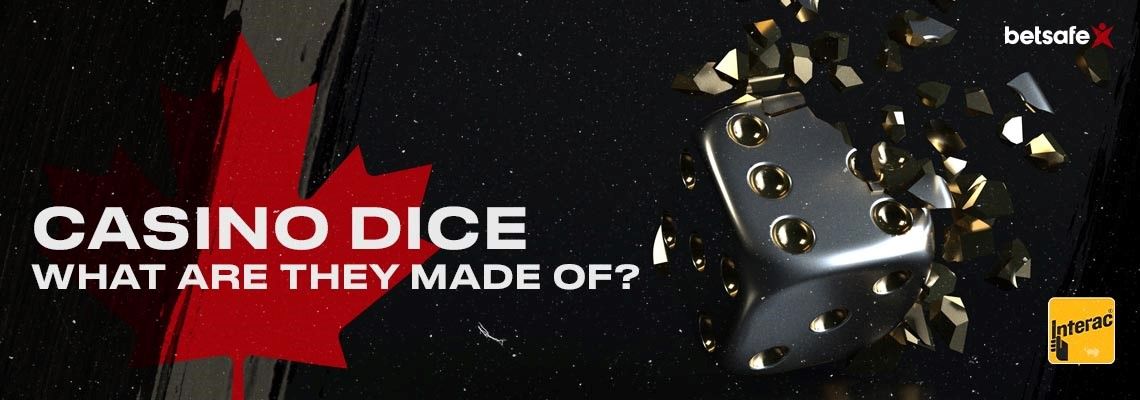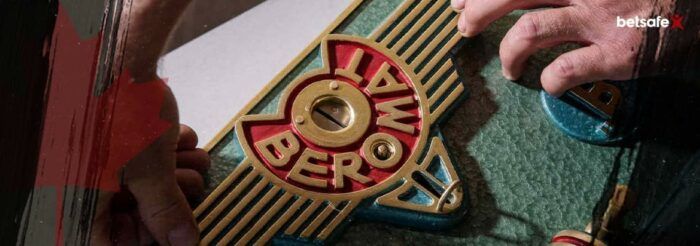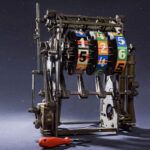What Are Dice Made of?
- The ancient Romans and Greeks used dice made from ivory and bone in various shapes and sizes.
- The first widely accepted “Casino dice” was made out of cellulose nitrate and introduced in the early 1920s.
- After testing the material for a few years, manufacturers switched to a more durable material like cellulose acetate.
- It’s widely accepted that the modern dice came from China, dating back to 600 B.C. The most plausible theory is that Marco Polo introduced these objects to Europe in the 14th century.
Dice and Gaming
Dice have been used in gaming for thousands of years, if not even longer. In fact, dice have even been referred to as the “oldest instruments used in gaming“. Evidence found in Egypt suggests that dice were used by their civilization as far back as 2000 B.C.
Evidence also exists that says dice were used by primitive American civilizations. Theory suggests that these original four-faced dice were believed to have been magical objects with the ability to predict the future. The same concept was interpreted throughout many modern video games, where leaders would make decisions based upon a Dice (e.g. Goldpaw from Ni No Kuni 2).
Casino dice feature up to six dots on each face and are typically cube-shaped. They’re so precise that they’re also known as precision or perfect dice based on how they’re made. And they’re about as close to being perfect cube-shaped objects as you can get.
The spots on a casino dice are filled with a material of equal weight to that of the material that was removed. Usually, the edges are sharp and the sides are flush. Predominantly, they’re transparent red, although they also appear in colours such as blue, purple, and green. Some dice used in an online casino are translucent, as opposed to being 100% transparent, if they have a sanded finish.
How is dice security managed?
It’s thought that any dice used in casinos should feature the same traditional arrangement of spots and faces. Crooked dice sometimes feature differentiation of spots (although they’re made to appear as though they’re regular dice), so a cheat can distinguish them from legitimate dice.
Since the 1970s, and a transition to corporate-owned casinos, it has become increasingly common for dice used in casinos to feature serial numbers. The number is made up of three or four numeric digits, which can possibly include dashes and letters, typically printed on the 6-spot, although it can appear on any other spot except 1. This printed number helps preventing them from being exchanged for crooked dice.
Another way of maintaining dice security is through the inclusion of key letters printed below the spots, which can only be seen when looking through the transparent die. The name of the casino, and sometimes logo and/or location, are also often seen on the dice. The name of the casino is typically displayed on the 1-spot, with the logo possibly featured on the 2-spot.
How did they improve manufacturing?
As we already mentioned in the beginning, in around the 1920s, dice used at casinos were made of cellulose nitrate. Around the 1950s, however, manufacturers were using a more durable material: cellulose acetate.
Really old dice used in casinos often crystallized and turned a sort of yellow around the edges. The crystallization is brought about by age, along with exposure to ultra-violet light and moisture. With pressure, dice that’ve been completely crystallized will disintegrate.
Can you purchase dice from a casino?
Sure you can. Many inexpensive casino dice, however, are rejects that failed to meet the manufacturer’s standards or used dice that the casino had previously cancelled. Both the used dice and rejects will have been defaced.
You can buy used dice from casinos to take home as souvenirs, although some venues insist on holding on to them. Once a dice is no longer in play, it’s considered as “cancelled”. A hole may be drilled through it or a circle or crescent is pressed into one side.
If you enjoy the feeling of rolling a dice at the casino, there’s no shortage of options for you to do so. Fortunately, with the advent of the Internet, you can get the same thrill of the game without even needing to physically roll the dice, but by simply clicking a button and letting technology roll it for you right before your eyes.







